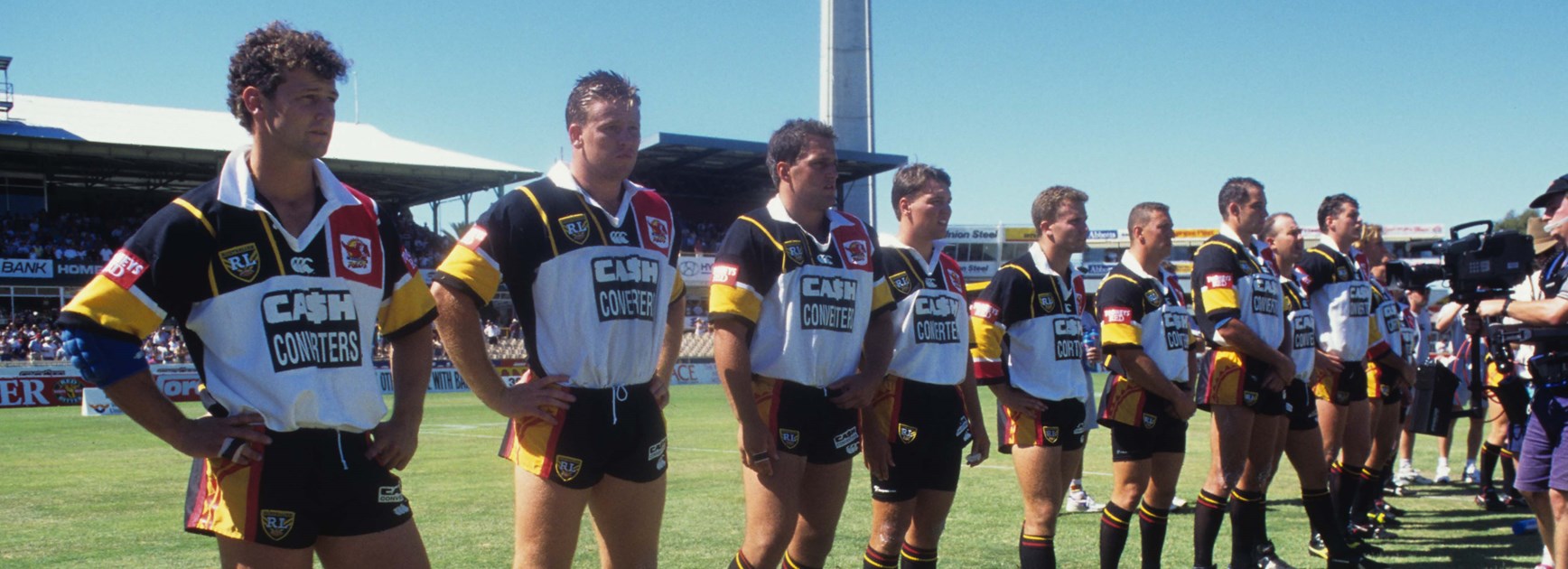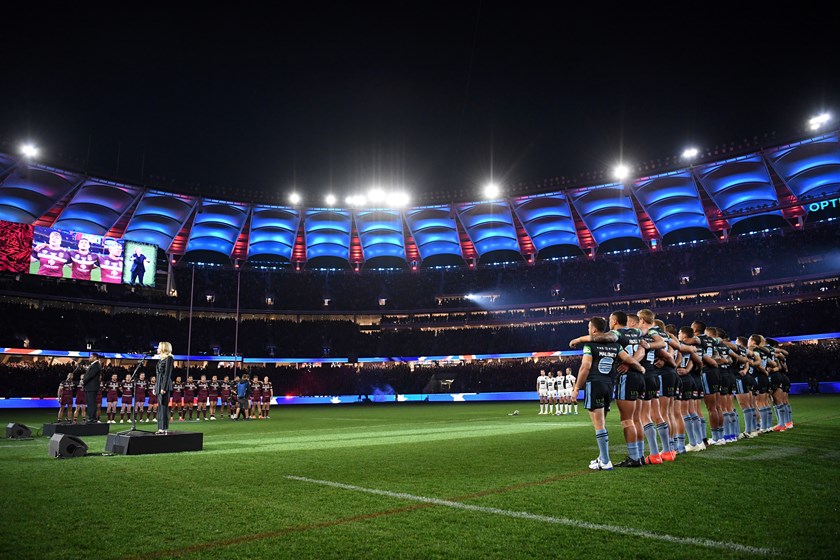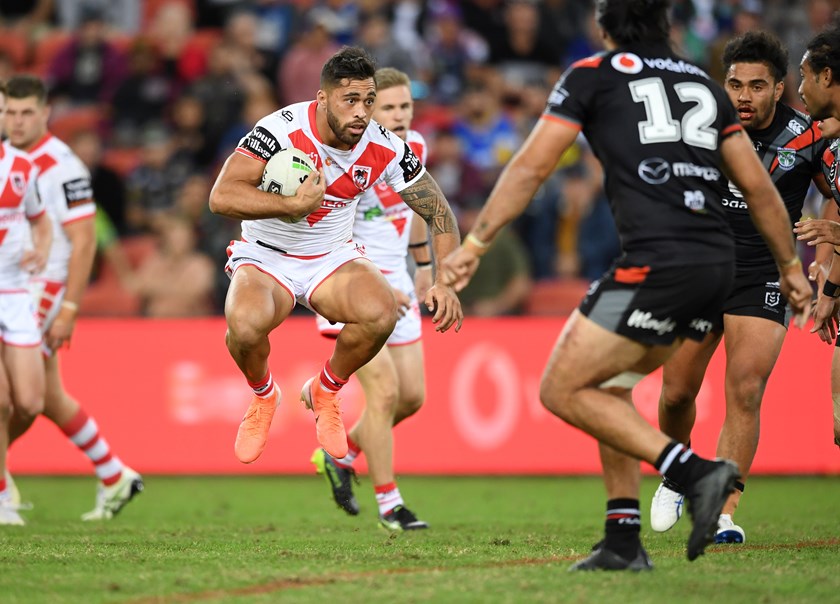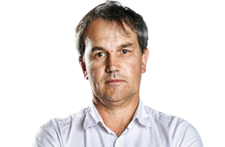
Robbie Kearns, Rodney Howe, Matt Geyer, Wayne Evans and Paul Bell weren’t all that the Storm inherited when the Perth Reds folded at the end of the Super League war in 1997.
"The whole gym from Perry Lakes, where we had a great training centre, was packed up and moved to Melbourne," foundation Reds coach Peter Mulholland said.
But the game in Western Australia lost much more after the demise of the Reds - the number of registered players dropped from more than 10,000 when they were playing at the WACA in the mid 1990s to less than 2000 a decade ago.
On the 25th anniversary of the Western Reds' first match against South Sydney at Redfern Oval in the 1995 pre-season Tooheys Challenge, registration numbers are again tracking upwards and now exceed more than 4000 players as the campaign for an NRL team gains momentum.
With the NRL Nines at HBF Park this week, expansion and the inclusion of a WA team in the Telstra Premiership is sure to be a topic of conversation among club bosses at Thursday’s CEO meeting in Perth.
The distance is the only issue but all of the other sports are able to cater for that.
Mick Potter
While many believe the AFL is more likely to have a team in Tasmania before the NRL expands beyond its current markets, CEO Todd Greenberg will hand down his eagerly awaited report on expansion in the near future and the West Coast Pirates are hoping to join the Telstra Premiership in 2023.
"You have got to have those sort of goals and that is the goal for the major stake-holders in the game here," NRL WA chairman John Sackson said.
"We are focusing as best we can on growth in participation and strengthening the foundations of the game here but we would certainly love to have the opportunity to have a franchise here in years to come."
According to Mulholland and former Reds fullback Mick Potter, the club was successful from the outset and both believe a new team in Perth would be too.
"I think it makes good sense, it is just how they do it," Potter said. "At some stage they are going to upset someone, but in the long run it is going to be better for the game.
"It would make it a proper national competition and they have got the facilities over there to cater for it, they have got the fan base to cater for it so the distance is the only issue but all of the other sports are able to cater for that."
The tyranny of distance
Travel costs were the catalyst for the demise of the Reds as the club had to pay for the flights and accommodation of rival teams playing in Perth, as well as their own expenses for away games.
On the field, the Reds had a strong team that included Kearns, Howe, Mark and Matt Geyer, Brad Mackay, Potter, Dale Fritz, Matt Rodwell, Chris Ryan and Matt Fuller, and they got the club off to a great start.
How the Perth NRL Nines will work
After beating the Rabbitohs 19-14 in the Tooheys Challenge on February 11, 1995 and losing 18-4 to Cronulla at Inverell a week later, the Reds drew 24,932 fans to the WACA to watch them beat St George 28-16 in their first ARL premiership match.
In their first season, the Reds averaged home crowds of 13,390 and won 11 of their 22 matches to finish just two points out of the finals but two years later the club was out of business.
"They reason it didn’t work is that the rules of the game were changed," Mulholland said. "We had to fly 25 people over to play us and accommodate them, and then we had to fly ourselves the next week to play away.
"We were set up with only one team and all of sudden they changed to rules so we had to have two teams [first and reserve grade].

"We did all our budgets on one team and all of a sudden it went from 25 people a week over and back to 50 people per week over and back. It basically broke us before we started, hence the need to go to Super League."
Renewed growth
The fallout from the Super League war impacted on attendances and support for the game in Perth, which was compounded heavily by the closure of the Reds.
However, there has been a growth in interest and participation in recent seasons, coinciding with Souths and other clubs playing regular NRL matches in Perth, the 2017 World Cup and last year’s State of Origin at Optus Stadium.
"To have 60,000 people at a sold-out Optus Stadium watching NSW play Queensland in unfortunate conditions has left a very positive legacy," Sackson said.
"Everybody spoke glowingly about the event; the way it was produced, the atmosphere, the excitement and the vibe around the city so you would like to think that off the back of that there are more people who are interested in rugby league or more aware and it may have resulted in more people watching broadcasts of NRL games."
Participation numbers in Western Australia grew a remarkable 16.7% in 2018, more than four times the national average of 3.5%, and Sackson said there had been significant growth last year.
"We’re up around 4000 participants now," he said. "Back in the days of the Reds there was over 10,000 registered players in Western Australia but with the exit of the Reds from the landscape here back around 2010 we were below 2,000 in registration numbers.
"We are shaping up now I believe for another year of genuine growth here."
Cash to splash
Cash Converters, the major sponsor of the Reds, has continued to support the game in Perth and are backers of the West Coast Pirates, who have been fielding teams in the NSWRL’s SG Ball competition since 2010.
Mining and tourism are wealthy industries in Western Australia which would be expected to help finance the Pirates if they were to gain an NRL licence.

"I think financially the people in Perth would get behind a team in the NRL and support it, whether it be mining or whether it be tourism ... it would be such a good thing for the city," Potter said. "I would really like the league to embrace it.
"There are probably a couple of million people over there now so it would be good if they had a team to support. Young players could aspire to play for their team."
North Queensland rookie Shane Wright, St George Illawarra winger Jordan Pereira, South Sydney’s Bryson Goodwin and Parramatta centre Waqa Blake are among the current NRL players with a connection to Perth.
Former Canterbury winger Curtis Rona and ex-Dragons fullback Adam Quinlan are among more than 20 players to have advanced from the Pirates SG Ball team to NRL clubs.
NRL club CEOs have been invited to attend Saturday’s SG Ball match in Perth between the Pirates and Dragons.
"Nothing is going to accelerate the growth of rugby league more in this state than one day having a successful, sustainable franchise here competing with the other codes. I’d like to think that is the destination for the game in Western Australia," Sackson said.
The views in this article do not necessarily express the opinions of the NRL, ARLC, NRL clubs or state associations.


